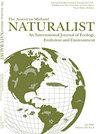俄亥俄河上游干流的高保护价值:北美的一条大河
IF 0.6
4区 环境科学与生态学
Q4 Agricultural and Biological Sciences
引用次数: 0
摘要
摘要与现代工业化地区的许多大型河流一样,俄亥俄河干流是一个经过严重改造的河流栖息地,由各种水库坝系和成形河道组成,而不是一个自由流动的系统。然而,由于关键的生活史特征,例如在大规模扰动后的快速重新定居,这些栖息地中的许多齿形动物物种,甚至是受保护的物种,都被证明在退化的乳液栖息地中繁衍生息。在这项研究中,我们对俄亥俄河干流宾夕法尼亚河段的齿形石组合进行了表征,并确定是否存在任何值得保护的物种。我们还通过测试靠近河岸和河道深度是否有助于预测牙形石丰度来测试河道中分布的假设。样本是作为副渔获物对底栖鱼类的采样而获得的,使用带电海底拖网捕鱼进行采样,这是一种在大型淡水河流中收集底栖大型无脊椎动物的新方法。我们发现了七种齿状物,所有这些都是美国一个或多个州关注的物种。我们还得出结论,河岸距离和河流深度的梯度只能微弱地预测牙形石的丰度,这表明俄亥俄河物种经常使用数米深的河道中部栖息地。收集到的大多数物种的生活史都是典型的生活在大型乳液环境中的物种,偶尔也生活在扁豆环境中。对其他大型温带河流的研究表明,在这些改良的环境中,齿形石的持续生存能力并不罕见,这可能是由于它们能够成功利用中游资源。尽管俄亥俄河流域的现代和历史栖息地条件存在巨大差异,但值得保护的齿形动物群落仍存在于主干河道中。本文章由计算机程序翻译,如有差异,请以英文原文为准。
High Conservation Value of the Odonata Assemblage in the Upper Ohio River Mainstem: A Large, Regulated River in North America
Abstract. Like many large rivers in modern industrialized regions, the Ohio River mainstem is a heavily modified riverine habitat comprised of various reservoir-dam series and shaped channels, rather than a free-flowing system. However, many odonate species in such habitats, even species of conservation concern, have been shown to prosper in degraded lotic habitats due to key life history attributes, such as rapid recolonization following large disturbances. In this study we characterize the assemblage of odonates in a Pennsylvania section of the Ohio River mainstem and determined if any species of conservation concern were present. We also tested hypotheses on distributions in the channel by testing if proximity to banks and channel depths helped predict odonate abundance. Samples were acquired as bycatch to benthic fish sampling conducted using electrified benthic trawling, a novel approach for collecting benthic macroinvertebrates in large freshwater rivers. We found seven odonate species, all of which were known to be species of conservation concern in one or more U.S. states. We also concluded that gradients of bank distance and river depth only weakly predicted odonate abundance, suggesting that the Ohio River species regularly use mid-channel habitat that is several meters deep. Life histories of most of the species collected are typical of those living in large lotic, and occasionally lentic, environments. Studies of other large, temperate rivers show that the ability to persist is not uncommon for odonates in these modified environments, and may be due to their ability to use mid-channel resources successfully. Despite the substantial differences between contemporary and historic conditions of habitats in the Ohio River basin, an odonate assemblage worth conserving continues to be present in the mainstem channel.
求助全文
通过发布文献求助,成功后即可免费获取论文全文。
去求助
来源期刊

American Midland Naturalist
环境科学-生态学
CiteScore
1.20
自引率
0.00%
发文量
38
审稿时长
18-36 weeks
期刊介绍:
The American Midland Naturalist has been published for 90 years by the University of Notre Dame. The connotations of Midland and Naturalist have broadened and its geographic coverage now includes North America with occasional articles from other continents. The old image of naturalist has changed and the journal publishes what Charles Elton aptly termed "scientific natural history" including field and experimental biology. Its significance and breadth of coverage are evident in that the American Midland Naturalist is among the most frequently cited journals in publications on ecology, mammalogy, herpetology, ornithology, ichthyology, parasitology, aquatic and invertebrate biology and other biological disciplines.
 求助内容:
求助内容: 应助结果提醒方式:
应助结果提醒方式:


